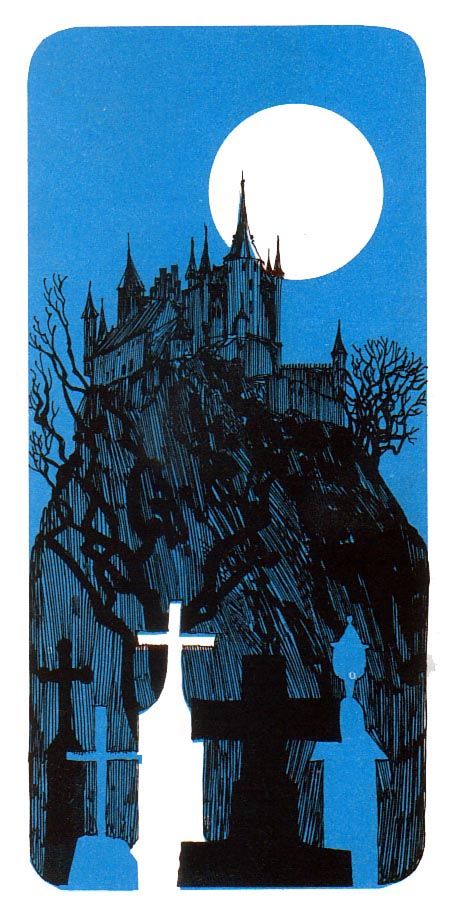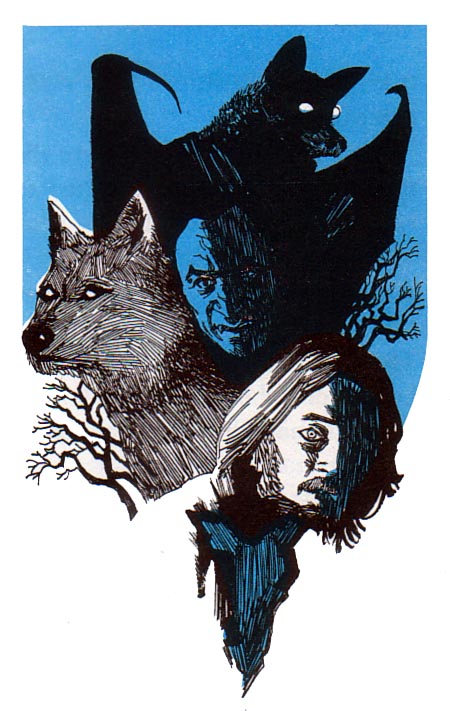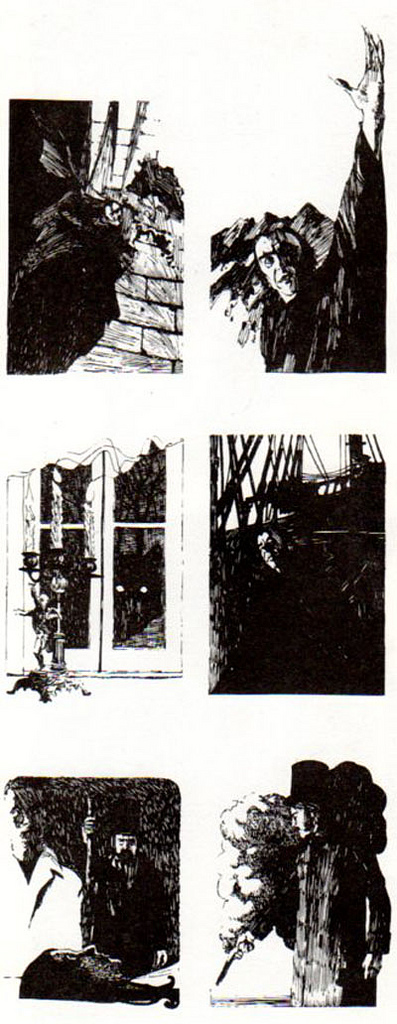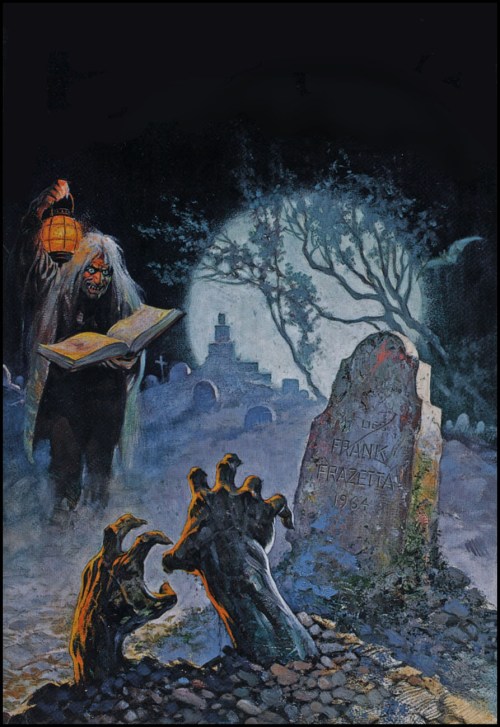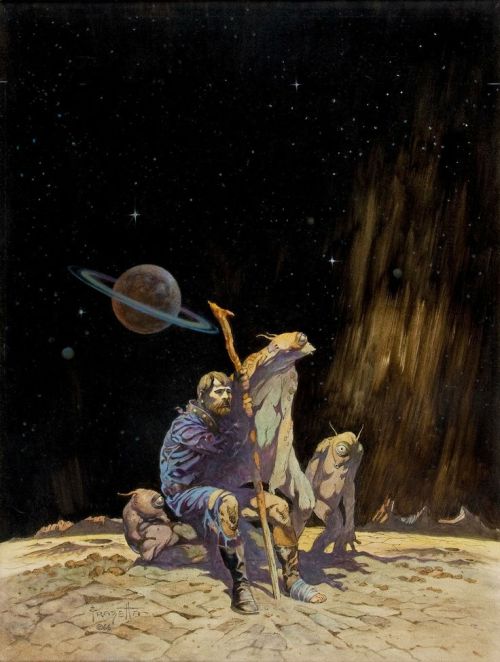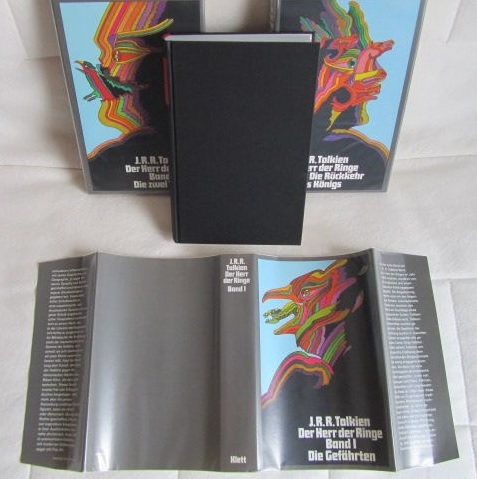





If you’re new to Stephen Fabian, Pinterest has a pretty good sample. I didn’t know that he gave up his career as an aerospace engineer at age 37 to pursue a career as a professional illustrator, and that it took him only seven years to hit the big leagues. Letters Lovecraftian was published one year before he was nominated for his first Hugo Award for Best Professional Artist. Fabian’s biggest artistic influence is Virgil Finlay, a definitive illustrator of Lovecraft and Weird Tales and a favorite of Lovecraft’s.
Letters Lovecraftian was commissioned by Fabian’s friend and patron, sci-fi and fantasy bookseller-publisher Gerry de la Ree (1924-1993), whose house/shop Fabian had first visited in 1955. “When I entered his home,” Fabian says,
I found myself in wonderland, beautiful paintings by famous SF artists hung on all the walls above the many bookcases that stretched around the room. The bookcases were all filled with rare science fiction and fantasy books. My sense of wonder was overflowing, and by the smile on his face I could see that Gerry knew how I felt. As I looked around, it never entered my mind that one day I would see my artwork displayed up there with all those wonderful artists, and that I would be part of that wonderland.
Fabian also tells the story of visiting Gerry for the last time, almost 40 years later:
One dreadful day Helen [Gerry’s wife] phoned to tell me that Gerry had only a day or two to live and would like to see me. It was a time of great sorrow. When I got there he greeted me at the door looking as normal as I’d ever seen him, though I knew that he suffered from sugar diabetes. During the next hour or so nothing was said about his imminent passing, and I don’t remember what we talked about because my mind was so numb from the shock of what was happening. I do remember that when the time came to leave, we looked at each other, there was an unspoken understanding that this was the final goodbye. We hugged and I left in a kind of daze. A few days later he was gone, and I’m still amazed when I think of how calm and ordinary his demeanor was during that last visit. Just before I left he waved at his magnificent library of rare and very expensive books and asked me to take any book I wanted. I couldn’t do it. Instead, there was a small plastic model airplane that a neighbor’s kid had made, and I took that because he insisted I take something to remember him by. And just like that, a truly wonderful part of my life was gone. That small plastic model airplane that I took sits on a bookshelf in my library and every time I look at it, and the tiny pilot that waves at me, I think of him.
(Images via Stephen Fabian and Stuart NG Books)

